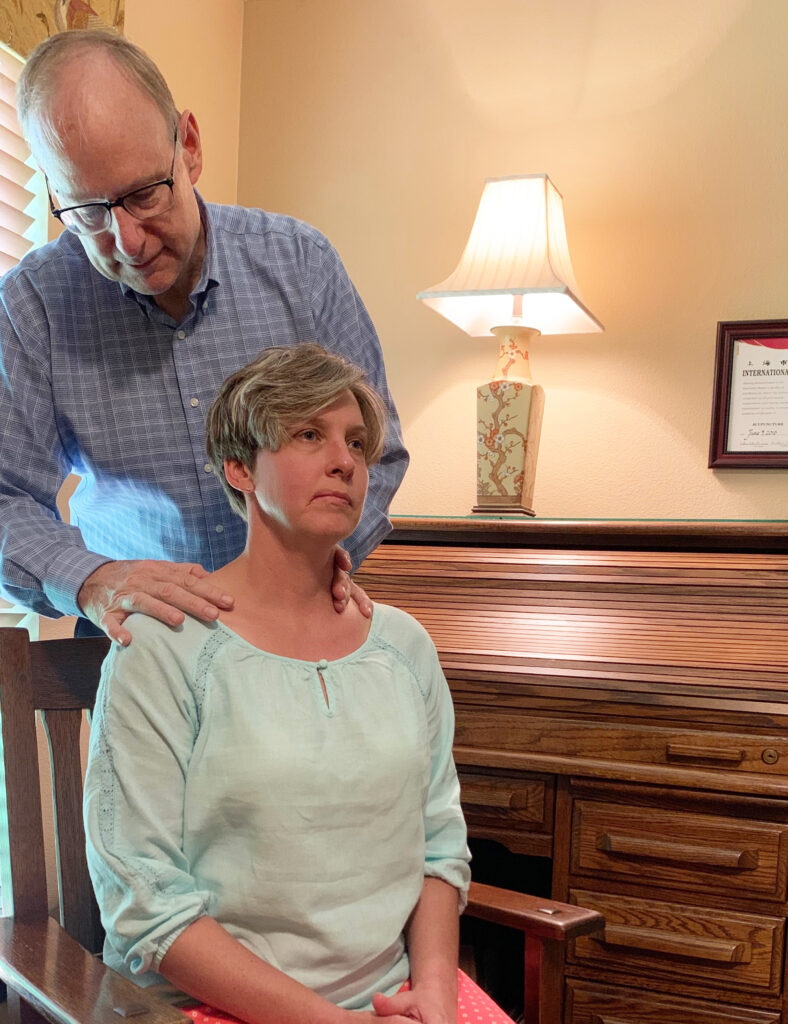Ancient Treatment for the Modern Age
When you stub your toe, your brain immediately goes into action, sending signals to the area to jumpstart the healing process. But sometimes, a disconnect happens between the brain and the injury, so even after a month or two goes by, you realize the pain still hasn’t gone away. That’s where acupuncture comes in.
HOW IT WORKS

A mind/body connecting force, as Georgetown acupuncturist Dr. Stephen Tranter calls it, acupuncture works by inserting tiny needles into the affected region to stimulate the nerves and draw the brain’s attention to the area.
Usually the brain already has that laser focus. “The theory in holistic medicine is that your brain is the master controller that drives everything in your body. When the brain recognizes what is happening in the body, it has and can make use of necessary resources to take care of itself. Bottom line; when there is a good connection, you heal,” Dr. Tranter says.
Thanks to poor diet, inadequate sleep habits, lack of exercise, or severe injury, that connection can weaken, which leads to long-lasting or chronic pain. But, acupuncture, which originated in China, has been relieving pain, without or complementary to medication, as early as 6000BCE. In those early days, practitioners used sharpened stones and long bones.
Acupuncturists believe energy, or qi (pronounced “chee”), flows through the body along 12 main channels, known as meridians, that represent the major organs and functions of the body. Illness or injury can disrupt that flow; acupuncture therapy can release that energy and prompt your body to begin healing itself.
REVIVAL
Acupuncture has had peaks and declines in popularity over the millennia; it was even outlawed in China in the early 20th century. By mid-century, the government saw fit to revive it among other traditional medical treatments. It spread to the United States in the 1970s when a journalist who traveled to China received treatment to relieve post-appendicitis pain. He later wrote an article about his experience, which sparked national interest in this foreign treatment.
Objectives and Objections
No thanks, you might say. I’m already in pain and I don’t need any more of it, especially if it involves needles.
Hold on, we’re not talking about getting a shot. As Dr. Tranter explains, eight acupuncture needles can fit into a single syringe needle. Most of the time, clients do not even feel an acupuncture needle. “At worst,” he says, “it just feels like a mosquito bite or a little prick that vanishes within seconds.”
Still needle-phobic? Dr. Tranter recommends acupressure, which applies pressure with tiny sticks. He says it is great for relieving everything except severe pain, which needs the added stimulation from needles.
After seeing acupuncture help his wife recover from bronchitis, as well as heal inflammation in his own hands, Dr. Tranter now recommends the treatment to others, from infants to seniors. “All of our body processes fall on one of our meridians, so those who suffer from chronic headaches, inflammation, stress injuries, and even Post-Traumatic Stress Disorder can be helped.”
Even if you don’t have an injury, acupuncture can simply improve overall wellness. Different providers may specialize in smoking cessation, infertility, depression, digestion, or allergies. “One of the most common things I hear is, ‘My body just feels so good,’” he says.
Patient Kathryn Rossremembers being suddenly struck with severe muscle pain in her back and legs. The pain reduced her from a runner who worked out every day to someone who couldn’t even walk one block, and none of the doctors she saw could determine the source of her mysterious pain. “It is life altering to lose that type of mobility,” she remembers. A friend described her amazing experience with acupuncture and urged her to see Dr. Tranter. “I went from not being able to walk a block, to now I’m running several miles and working out. It’s the best thing I ever did,” Kathryn says.
A Jab Well Done
Nicole Ware, a Licensed Acupuncturist, recommends if you are considering this non-toxic option for a condition or concern, it is important to remember acupuncture is a process of helping your body heal itself. Depending on needs, some experience relief in the first treatment, and others require one or two visits per week for a few weeks or months. “For many of us, our pain did not appear overnight, and our bodies need time to repair. Medication may fix a symptom, but, ideally, we are helping our bodies ‘remember’ their optimum processes.” She adds that, for many, the combination of eastern and western medicine may be the best solution and warns not to eschew seeing your primary care doctors for medical advice and complementary treatments.
